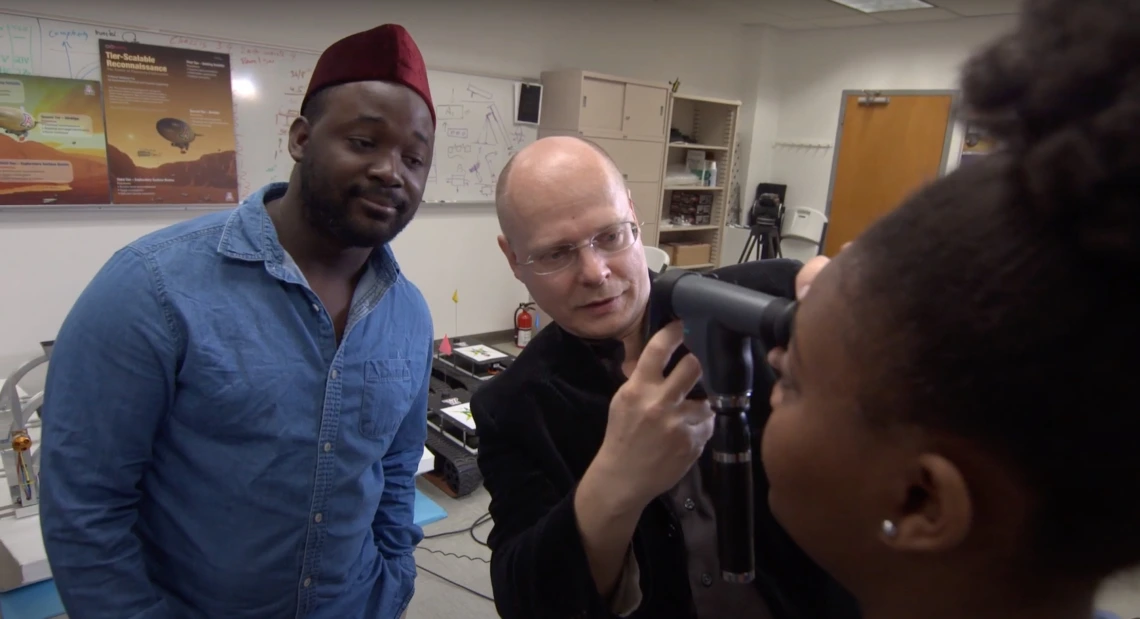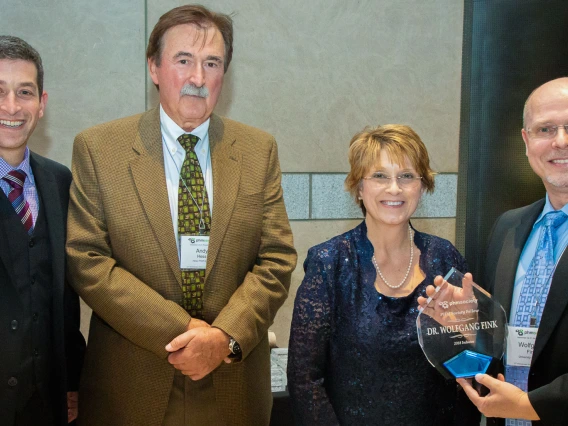Vision Society Adds Forward-Looking Professor to 2023 Class of Fellows
The recognition marks Wolfgang Fink’s sixth overall fellowship, and the fourth in a national or international society.

Professor Wolfgang Fink (center) in his lab with former students Tembong Fotabong Fonji (left) and Ty'Dria Wright White (right).
The Association for Research in Vision and Ophthalmology, or ARVO, the largest eye and vision research organization in the world, has selected University of Arizona electrical and computer engineering professor Wolfgang Fink as a member of its 2023 class of Fellows. He will be honored with Silver Fellow status at the organization’s annual conference in April 2023.
Fink, the inaugural Edward & Maria Keonjian Endowed Chair in Microelectronics, is also a professor of aerospace and mechanical engineering, biomedical engineering, ophthalmology and vision science, and systems and industrial engineering. This marks his sixth fellow title, with others in the American Institute for Medical and Biological Engineering, the Prognostics and Health Management Society and SPIE (the international society for optics and photonics). He is also the UA College of Engineering’s 2015 da Vinci Fellow and a fellow of the Arizona Center for Accelerated Biomedical Innovation.
This recognition is particularly significant because ARVO is one of the first professional societies Fink became involved with while still a PhD student in Germany.
“This is in recognition of over 27 years of service, research, productivity and contributions to the ophthalmic and vision science community,” Fink said. “The society definitely sets the standard in ophthalmology and vision science worldwide. You have so many scientists and clinicians in the field come to the annual meetings, and it’s sort of the stock exchange, or news platform, where you learn about the latest and greatest advancements in all areas.”
As the founder and director of the Visual and Autonomous Exploration Systems Research Laboratory, Fink’s work in the field of ophthalmology and vision science includes worldwide accessible visual performance tests, ophthalmic and tele-ophthalmic examination devices and implantable ocular sensors – all for ocular healthcare. Moreover, he has worked to improve vision prostheses for the blind. In 2021, he oversaw a group of students in developing a navigation system for vision-impaired people which uses vibrations to indicate when the user is approaching obstacles.



